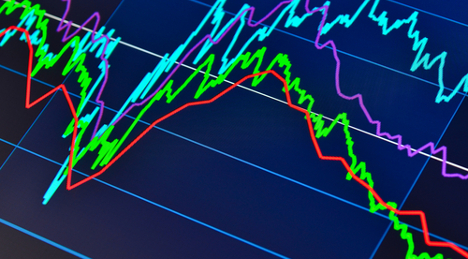RVI Group’s lease & price outlook through 2020

Photo from Shutterstock.com
The latest RVI Risk Outlook from RVI Group not only recapped February wholesale prices movements, but firm analysts projected where new-model lease penetration will trend through 2020 and how much of a pricing impact that level could make.
In the first-quarter report released on Tuesday, RVI Group indicated real used-vehicle prices (seasonally adjusted for 2- through 5-year-old units) continue to decline on a year-over-year basis. Analysts found that real used-vehicle prices (after adjusting for MSRP) fell by 6.4 percent in February when compared to the same month last year.
When compared to the previous month, RVI Group noticed real used-vehicle prices declined by 2.5 percent
In the small SUV segment, analysts pointed out prices fell by 5.9 percent on a year-over-year basis, performing better than the market average.
“The increasing supply of used vehicles and steady growth of incentive activity will continue to put downward pressure on used-car prices,” RVI Group said in the report that can be downloaded here.
RVI Group then projected that lease penetration will remain near “historical highs” through 2020.
“As the off-leased vehicles re-enter the market, we expect to see further declines in used-car prices,” analysts said. “Real used-vehicle prices are expected to decline 12.5 percent from current levels by 2020.”
Also in the report, RVI Group recapped that new-vehicle sales declined slightly in February to 17.5 million SAAR from 17.6 million in January. On a year-over-year basis, the report indicated vehicle sales declined by 0.8 percent in February.
Analysts mentioned the lease penetration rate for the fourth quarter of 2016 came in at 22.7 percent of total sales, a decline from 22.8 percent in the third quarter of the same year.
RVI Group went on to note that market level incentive activity has continued to grow, increasing to 10.0 percent of MSRP in February from 9.6 percent of MSRP in January. In February, analysts also highlighted the new vehicle CPI increased by 0.5 percent on a year-over-year basis but decreased by 0.2 percent on a month-over-month basis.
In recapping other trends collected by federal agencies, RVI Group highlighted that key economic indicators showed signs that the U.S. economy is steady.
In the fourth quarter of 2016, analysts said GDP grew at an annual rate of 1.9 percent, down from 3.5 percent growth in the third quarter.
“The slowdown was due to negative contributions from exports and federal government spending that offset positive contributions coming from personal consumption expenditure, private inventory investment, residential and nonresidential fixed investment, and state and local government investment,” RVI Group said.
In February, analysts recapped that the U.S. unemployment rate came in at 4.7 percent, a decline from 4.8 percent from the previous month, while the labor participation rate showed little change from January to February. Meanwhile, inflation came in at 2.7 percent, the highest inflation rate since March 2012, according to RVI Group’s report.

 View The Latest Edition
View The Latest Edition

